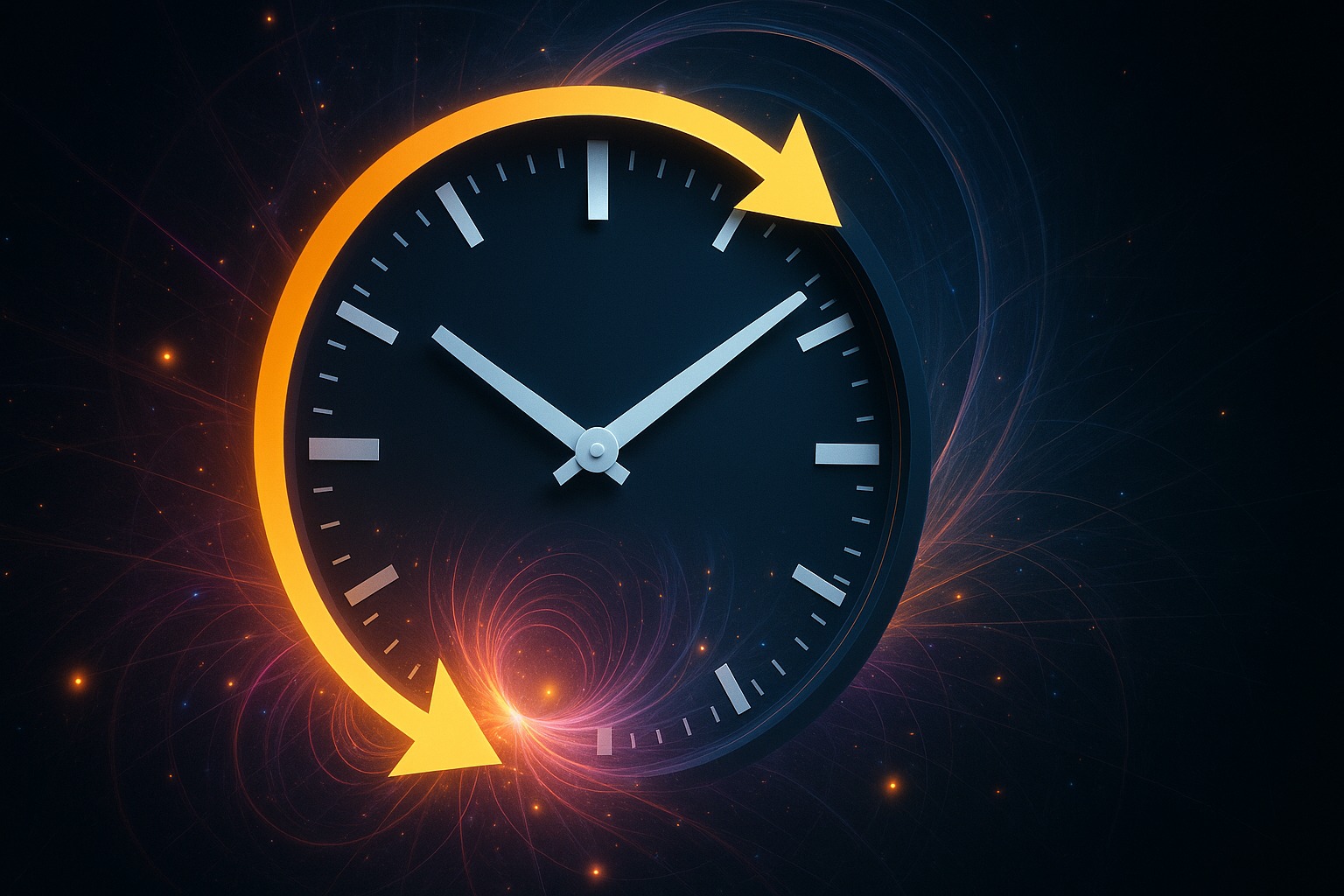A Breakthrough Straight Out of Science Fiction
Until now, the idea of turning back time belonged only in the realm of science fiction. But an international team of physicists has just announced a discovery that could reshape our fundamental understanding of the universe: they have managed to reverse, on a microscopic scale, the evolution of a quantum system.
This phenomenon, called “quantum time reversal,” was observed in a highly controlled laboratory environment using subatomic particles and complex algorithms to simulate a return to their previous state.
While this doesn’t mean we’ll be travelling to the past anytime soon, it opens a fascinating new chapter in physics — with potential applications we can barely imagine today.
As one of the lead researchers explained:
“We haven’t built a time machine, but we’ve shown that it’s possible, under certain conditions, to reverse the evolution of a physical system.”
How Did They Do It?
The team worked with qubits, the basic units of quantum computing, which can exist in multiple states at once.
Using a specially designed program, they applied a series of operations that allowed a qubit to “return” to its initial state — as if the process that altered it had never occurred.
The experiment relied on two key factors:
- Extremely precise mathematical modelling of the qubits’ evolution
- A perfectly isolated environment to avoid any external interference
This demonstration, though limited in both time and scale, marks the first experimental proof that it’s possible to “reverse” the state of a physical system without breaking known laws of physics.
Limits and Potential Applications
It’s important to note that this reversal does not apply to time in the broader sense, but only to the state of a specific system. Reversing the evolution of a particle doesn’t, for instance, allow us to relive past events in the real world.
Still, the potential applications are significant. Scientists are already exploring possibilities in:
- Quantum error correction, by “resetting” a calculation disrupted by interference
- High-precision metrology, improving measurement of physical phenomena
- Simulating irreversible processes, to better understand thermodynamics
How Does It Compare to Other Quantum Breakthroughs?
This experiment is part of a growing list of achievements pushing the limits of our understanding of the microscopic world.
| Discovery | Year | Scientific Impact |
|---|---|---|
| Quantum information teleportation | 2019 | Instant transfer of data between distant qubits |
| Google’s quantum supremacy | 2019 | Computation achieved faster than a classical supercomputer |
| Quantum time reversal | 2025 | First experimental demonstration of returning to an initial state |
Each step brings physicists closer to fine-tuning control over quantum systems, with implications for computing, cryptography, and even energy technologies.
A Glimpse Into a New Scientific Era
Although reversing time on a large scale remains far out of reach, this experiment shows that the laws of physics may not be as unchangeable as we once thought.
Researchers emphasize that this is only the beginning. The coming years will determine whether time reversal can be applied to more complex systems — and whether it can be harnessed for practical, real-world uses.
